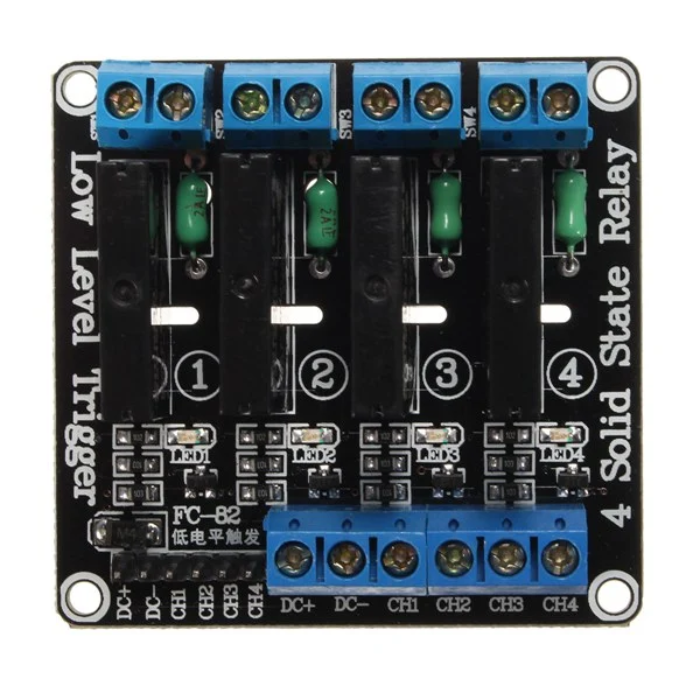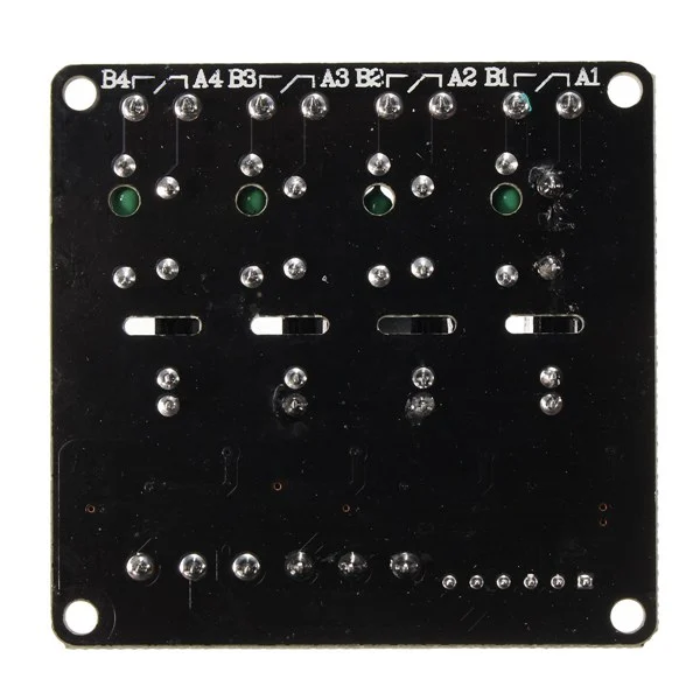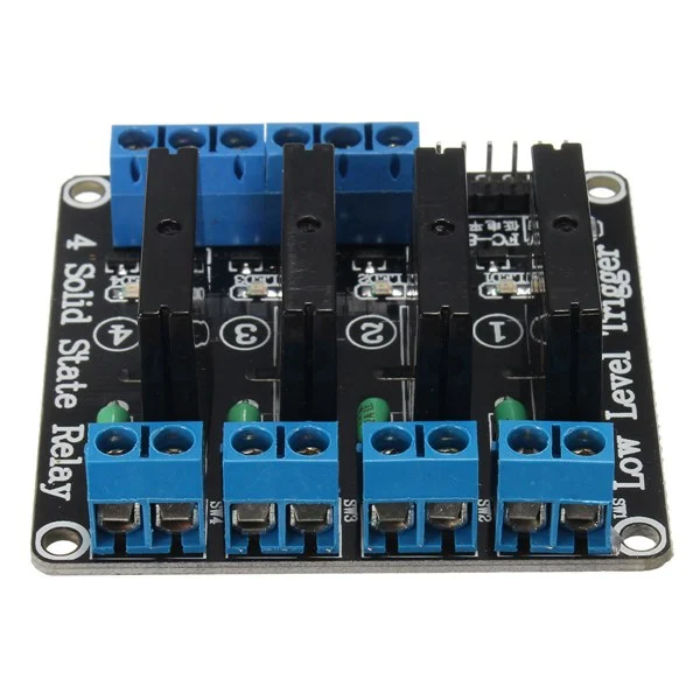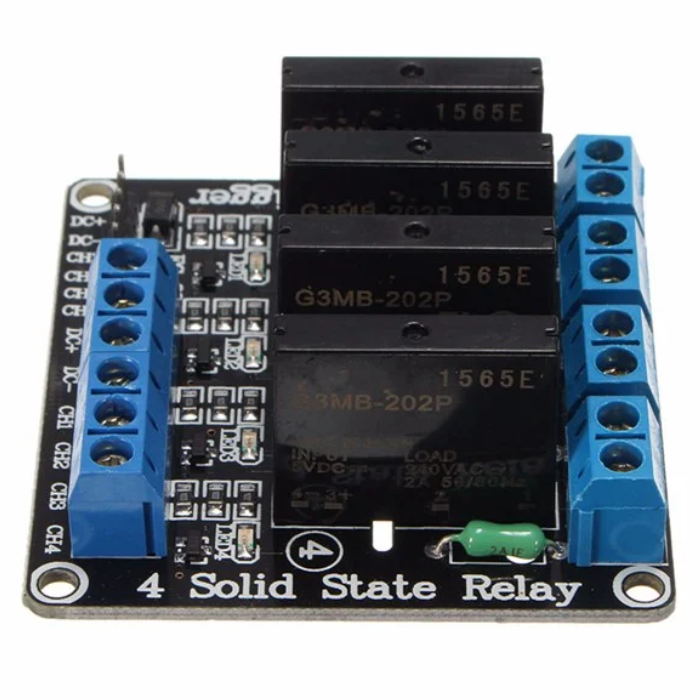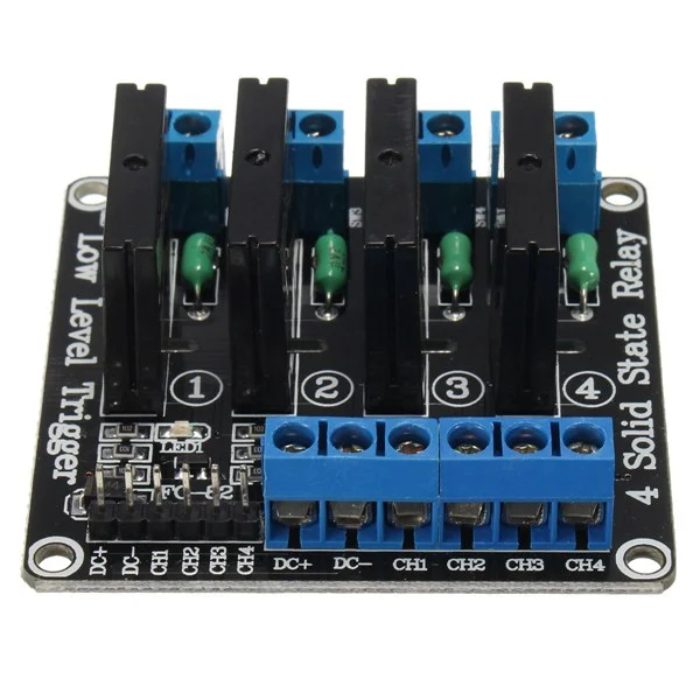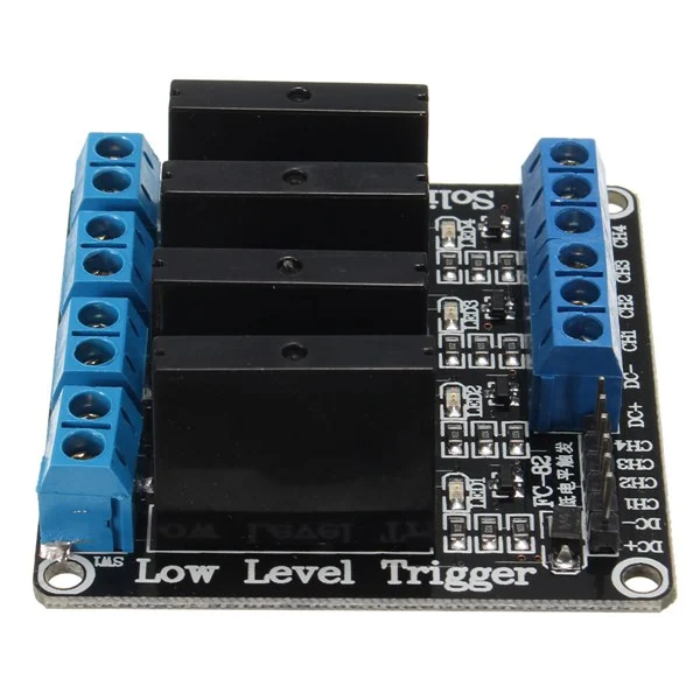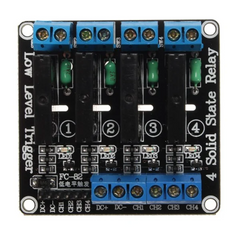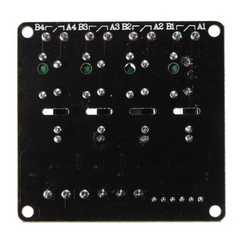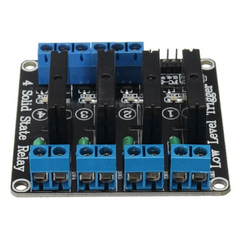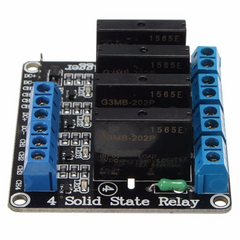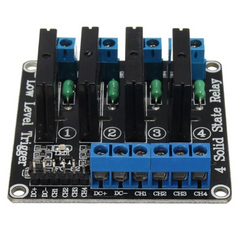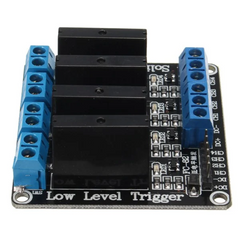4 Channel Solid State Relay
4-Channel Solid-State Relay is somewhat similar to that of a mechanical relay & the difference is that there is no moving contact in a Solid-State Relay.
Here we make use of a Phototrriac coupler to turn it ON and OFF. It finds its application in AC circuits as a TRIAC has got only limited applications in DC.
This module is ideally suited to controlling larger voltages with the project. This is a 4 channel relay module that can be used to activate up to 240V AC.
This allows you to build in device control, operating lighting, or triggering systems when the module is triggered. With the labeled screw terminals it's easy to connect.
Solid State Relay - Solid State Relay (SSR) has advantages such as more efficient switching speeds, more stable operation against electrical noise, longer service life, resistance to physical vibrations and resistance to moisture, which distinguish this type of relay from ordinary mechanical relays.
These relays are preferred in places that require fast and precise operation such as computer peripherals, medical devices.
Solid-state relays do have several advantages over mechanical relays. One such advantage is that they can be switched by a much lower voltage and at a much lower current than most mechanical relays.
Also, because there are no moving contacts, solid-state relays can be switched much faster and for much longer periods without wearing out. This is a quad-channel relay module which can be used to activate up to four separate 240V AC.
This allows you to build in device control, operating remote lights or triggering systems when the module is supplied the signal.The screw terminals are well labeled and definition of the units function is shown underneath.
Also, read our blog on What is a Relay detailing how it works, relay contact types, and different types of relays and their application.
Applications:
- Control outputs from programmable controllers and positioning controllers
- Office Automation,
- Home Automation



